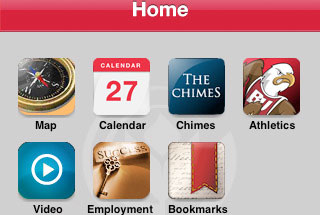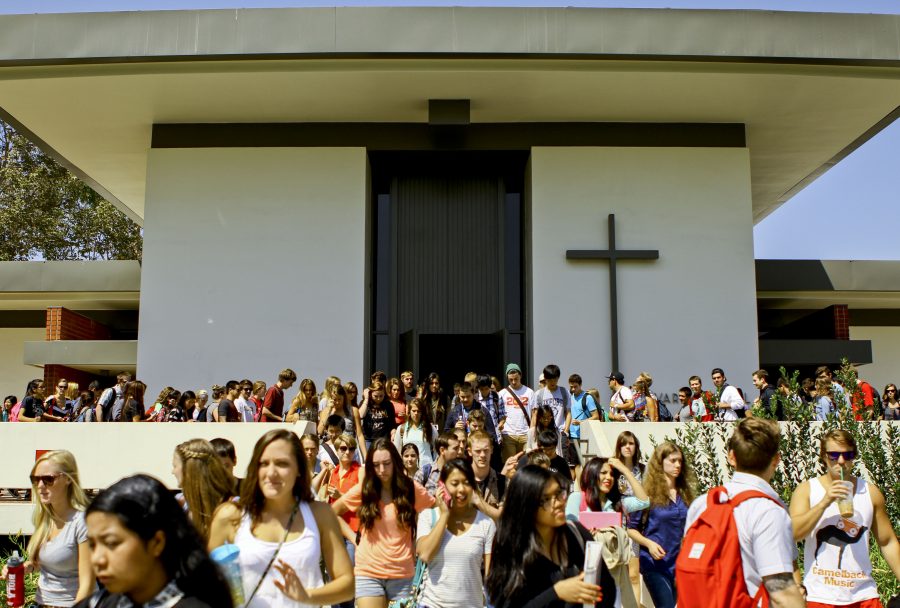With one small iPhone app, Biola is taking a large leap into the future of technology, all for the sake of advancing its mission in the world.
The official app, Biola Mobile, has recently been released for free download. Those who possess an iPhone, iPod Touch or iPad can navigate to the app store, search for Biola and download the app.
Biola’s efforts to make major steps forward in technology have been in the works for awhile. The iPhone app and the university’s new page on iTunes U are all part of the push to use technology to spread Biola’s message. The university’s new, strategic plan sees a focus on applying advanced media and technology to forward its mission in new ways. Biola Mobile has been in the works since November 2009 and is a bold step forward in this mission. Although the app is still in its early stages, it is a sign of Biola’s progress.
“Things are changing in the world of higher education,” said President Corey at the Imagination Summit on March 12, 2010. “Technology is important; it’s important we think about pondering the future.”
A company called Amuzu, which develops applications for various schools, developed the program for Biola. The app itself is unique in because Amuzu developed it for Biola. Because of that, the university now has almost complete control over what the app can do, what it can look like, etc. For example, Biola has the option to charge companies, like Starbucks, to put advertisements inside the app, thus generating revenue for the school.
Although the current build is more sparse than not, Biola has the option of adding all different types of interactive features such as a locator, which would find the location of the user of the device in real time, an interactive campus map, a Google map feature, a course catalog or even a Biola Radio stream.
This customizability gives the app adequate room to expand and grow and also allows Biola to be safe with the app – Biola currently has the option of requiring a password for various sections (i.e. for the housing section, a password that would only be known to students).
The app loads and begins with a nice interface and an excellent design aesthetic. The home screen sports seven different tiles, each one a portal to a different part of the app and each arranged in a friendly design. Each section functions like an RSS feed – upon tapping a tile, the user is navigated to a slick catalogue of whatever is inside of the category.
Inside the calendar are school events, and the athletics section contains a list of upcoming Biola athletic events. Some of the sections are more detailed than others, with The Chimes section being by far the nicest. In The Chimes tile, the user is greeted with a bevy of articles, complete with section tabs dividing it up into news, A&E, sports and more. The Chimes section even includes the ability to customize which section tabs you place down at the bottom.
The only downside to the app is that, as of yet, it lacks anything more than what has been mentioned. For a school as large as Biola, this seems a bit inadequate. As time progresses, hopefully, Biola will take the next step and have this app roaring with various interactive features. Hopefully, in the future, iPhone, iPod Touch and iPad users will have the ability to receive notifications for events in which they express interest.
Another item for the wish list is the ability to add school events from the calendar directly into the iCal app, which comes preinstalled on the devices. Even adding a little BiolaChat function, in which students in the local vicinity can come online and chat with each other, seems to be a neat addition that could be implemented.
Yet despite this current lack of fun features, Biola Mobile is a great first step into the digital frontier. This app proves that technology is just one of the many ways in which Biola is bringing its Christ-centered message to the culture in which it operates.







